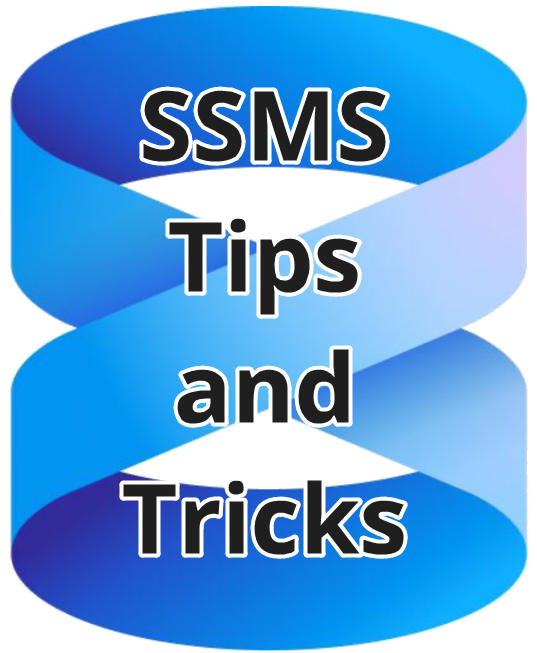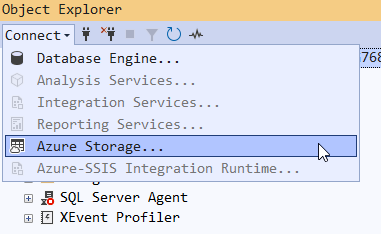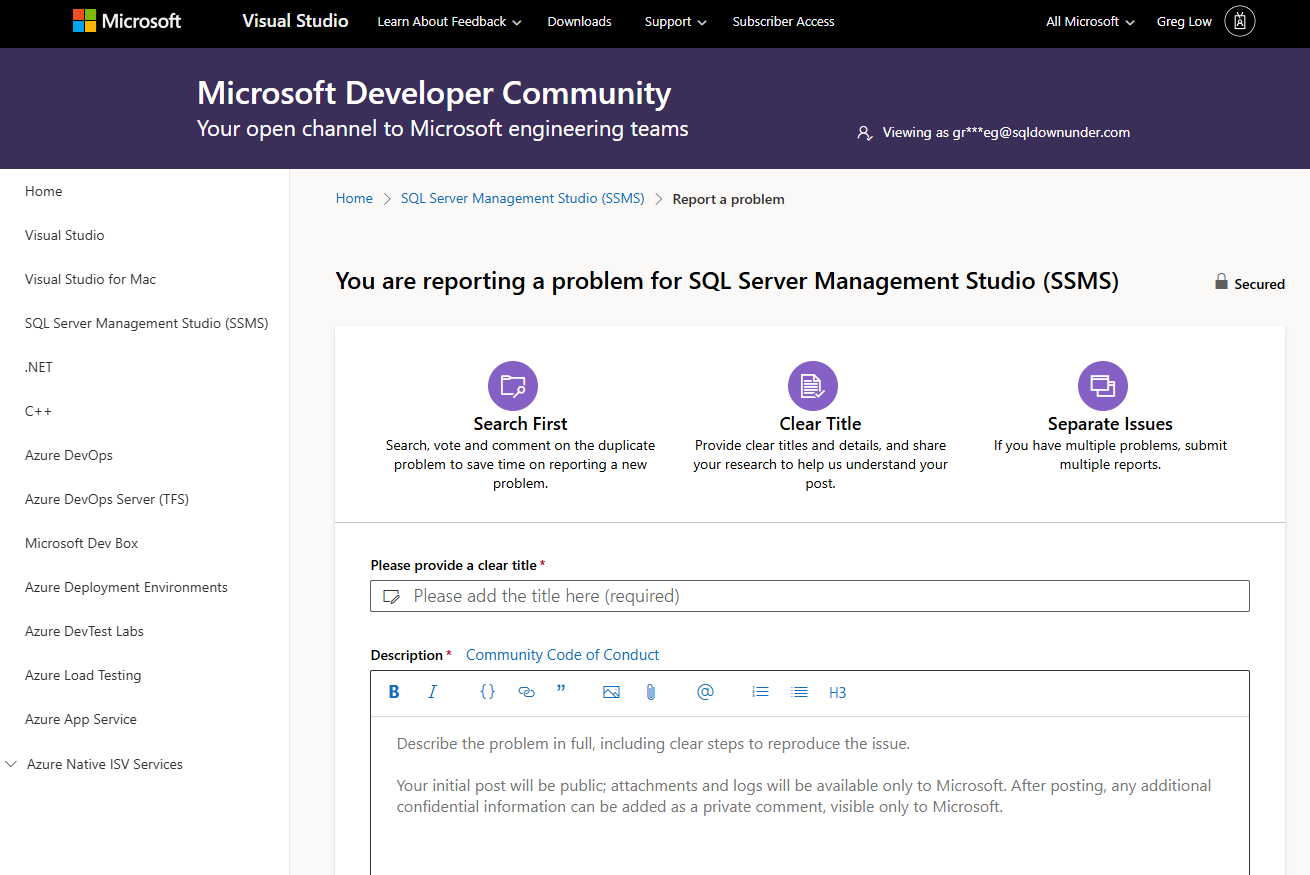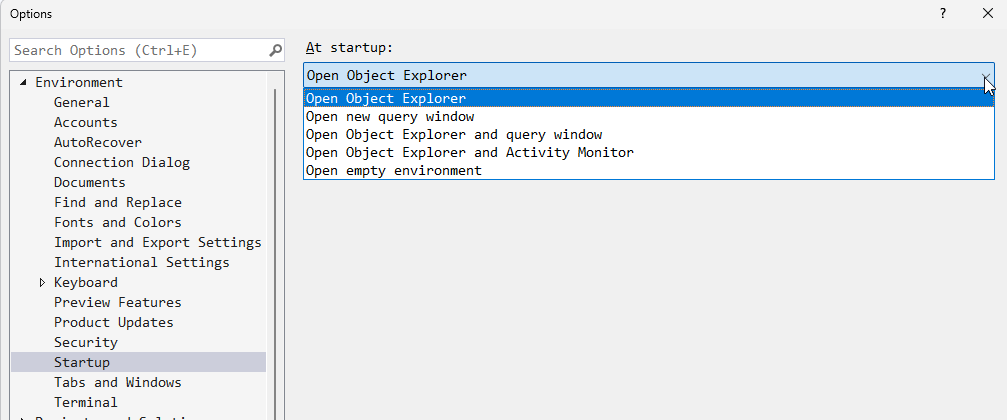
SSMS Tips and Tricks 7-15: Disabling the open transaction check
When you close SSMS, the default action is that it checks each open window and makes sure there are no open transactions before it closes.
This is to allow you to decide what to do if you do have an open transaction, and based on that, to avoid losing any work.
While this sounds like a great idea, I mostly now work with Azure SQL Database, and my SSMS windows have been idle for long enough that I’ve lost the connection. So, when I close SSMS, it tries to check the transaction status against connections that are already closed under the covers.
2025-10-26








